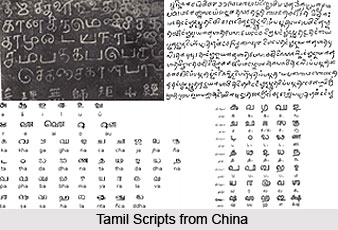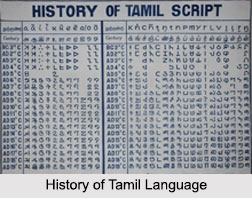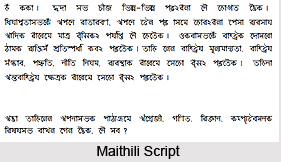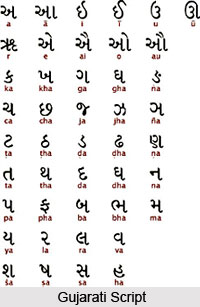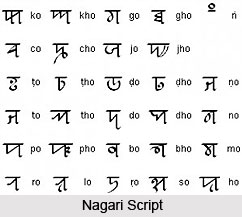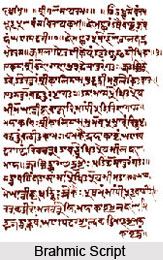 When man felt the need to express his emotions, he began to speak or write. This step of man gradually led to the development of various languages and abugidas (writing systems). The Brahmic family is the name given to a family of abugidas used in South Asia, Southeast Asia, Tibet, Mongolia, and Manchuria. This family is probably a descendent of the Brahmi script of Mauryan India. Each individual unit of this writing system can be called Brahmic scripts or Indic scripts. Brahmic scripts have evolved from the Brahmi script of prehistoric India, which is believed to share a common ancestor with European scripts. Nevertheless, some academicians opine that the Vikramkhol inscription provides ample evidence for the fact that the Brahmi script had native origins, presumably in the Indus Valley (Harappan) script.
When man felt the need to express his emotions, he began to speak or write. This step of man gradually led to the development of various languages and abugidas (writing systems). The Brahmic family is the name given to a family of abugidas used in South Asia, Southeast Asia, Tibet, Mongolia, and Manchuria. This family is probably a descendent of the Brahmi script of Mauryan India. Each individual unit of this writing system can be called Brahmic scripts or Indic scripts. Brahmic scripts have evolved from the Brahmi script of prehistoric India, which is believed to share a common ancestor with European scripts. Nevertheless, some academicians opine that the Vikramkhol inscription provides ample evidence for the fact that the Brahmi script had native origins, presumably in the Indus Valley (Harappan) script.
The most important component of the Brahmic family is the Devanagari script, which is used to write a number of languages of India and Nepal, including Hindi, Konkani, Marathi, Nepali, Nepal Bhasa and Sanskrit. Other northern Brahmic scripts consist of the Eastern Nagari script (from which are derived the languages of Bengali, Assamese, Bishnupriya Manipuri, and other eastern Indic languages), the Oriya script, the Gujarati script, the Ranjana script, the Prachalit script, the Bhujimol script and the Gurmukhi script.
The Dravidian languages of southern India have Brahmic scripts that have developed in order to suit southern needs. The first trace of Brahmi script in South India comes from Bhattiprolu in Guntur district of Andhra Pradesh. Bhattiprolu was a large center of Buddhism throughout the 3rd century CE. From this place, Buddhism spread to eastern Asia. The current Telugu script is a derivative of the `Telugu Kannada script`, alternatively known as the `old Kannada script`, on account of its likeness to the same. At first small changes were made which is now called Tamil brahmi. It has a much smaller number of letters than some of the other Indic scripts as it has no separate aspirated or voiced consonants. A lot of changes were made in 19th and 20th centuries to suit the printing and typewriting needs so that we have this present script of the Brahmic family. Burmese, Cambodian, Lao, Thai, Javanese, Balinese and Tibetan are also varied versions of the Brahmic scripts, though there is ample modification.
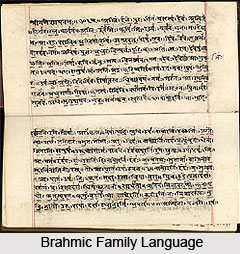 There are some general characteristics, which are common to all the scripts of the Brahmic family. Each consonant has an inherent vowel, which is generally a short `a`. Other vowels are written by adding up to this character. A particular punctuation mark known in Sanskrit as a virama or halant is often used to signify the deficiency of an inherent vowel. Each vowel has two types, an independent type (when not part of any consonant), and a dependent type (when attached to a consonant). According to the nature of the script, the dependent types can be either placed to the left of, to the right of, over, beneath, or on both the left and the right sides of the base consonant. Binders can combine consonants.
There are some general characteristics, which are common to all the scripts of the Brahmic family. Each consonant has an inherent vowel, which is generally a short `a`. Other vowels are written by adding up to this character. A particular punctuation mark known in Sanskrit as a virama or halant is often used to signify the deficiency of an inherent vowel. Each vowel has two types, an independent type (when not part of any consonant), and a dependent type (when attached to a consonant). According to the nature of the script, the dependent types can be either placed to the left of, to the right of, over, beneath, or on both the left and the right sides of the base consonant. Binders can combine consonants.
Particular marks are used to designate the combination of `r` with another consonant. Distinctive signs also denote nasalization and aspiration of a consonant`s dependent vowel. The conventional arrangement goes thus: vowels, velar consonants, palatal consonants, retroflex consonants, dental consonants, bilabial consonants, approximants, sibilants, and other consonants. Each consonant grouping consists of four consonants (with all four probable values of voicing and aspiration), and a nasalised consonant. Many languages using scripts of the Brahmic family are occasionally written in Latin script, principally for the advantage of non-native speakers or for use in computer. Professor Gari Ledyard is of the opinion that the hangul script used in writing Korean is based on the Mongol Phagspa script, a successor of the Brahmic family.
The scripts which have so far been listed as members of the Brahmic family are Cuneiform, Cyrillic, Brahmic, Latin, Baybayin, Balinese, Batak, Bengali, Buhid, Devanagari, Gujarati, Gurmukhi, Javanese, Hanuno, Limbu, Kannada, Sinhala, Malayalam, Khmer, Lao, New Tai Lue, Lepcha, Myanmar, Oriya, Tagbanwa, Tai Le, Phags-pa, Rejang, Syloti Nagri, Tamil, Telugu, Thai, Tibetan, Ahom, Cham, Brahmi, Grantha, Chakma, Soyombo, Siddham, Manchu, Lanna, Mithilakshar, Ranjana and Sharda. Two scripts, which look somewhat like the scripts of the Brahmic family, are Tocharian (which has now become extinct) and Thaana.
